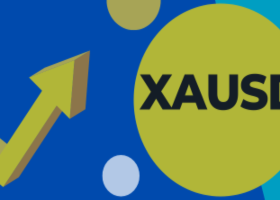Euro Exchange Rate Forecasts: Downside as Speculation Grows on an ECB ‘Add-On’
The euro recovered impressively after the ECB's December meeting in which limited easing measures were announced, but has the currency's run of luck finally coming to an end?
At the ECB’s January meeting Mario Draghi let the cat out of the bag by telling the world that the governing council would be “reviewing and reconsidering” its policy at its March meeting.
December’s inflation miss was a primary reason but a broader down-grading of medium and longer-term price expectations also factored.
The situation seems to have got so bad that now even governing council hawks are disposed to considering more monetary easing.
Jeremy Stretch of CIBC Capital Markets, for example, mentions:
“The ECB have clearly opened the door to additional action.
“Indeed, hawks such as Dutch central bank Governor Knot are now arguing that should lower oil prices prove to take a ‘foothold’ monetary policy should be revisited.
“However, it appears previous ECB dissenters would prefer to sanction another deposit rate cut rather than additional QE.”
Euro Exchange Rates Turn
In the wake of these developments the euro's upside has been capped.
The EUR to GBP rate has fallen from recent highs at 0.7695 towards 0.7561.
The EUR to USD rate is at 1.08 down from recent highs above 1.09 registered in the previous week.
0.10% Deposit Rate Cut on the Cards
It already costs bank’s money if they want to deposit their cash with the ECB, an unusually inverted state of affairs given it is normally the other way around, however, most analysts speculating on what could pass at the ECB’s March meeting suggest an even deeper reduction in the deposit rate of 10 basis points from - 0.30% to - 0.40% may be the most likely outcome.
Bank of America was one of the first to come out and suggest the 10 basis point cut scenario as most likely with a possible further extension of the monthly asset purchase programme thrown in:
“We suspect that the ECB cannot stick to "more of the same" and merely extend the purchases by a few months and take the depo rate down by another 10 bps.
“The toolbox will likely be re-opened wide. That "no technical limits" constrain the ECB stance is an important statement, in our view.
“The ECB's staff creativity is going to be tapped in the next few weeks.”
Barclays Join the Fray
Barclays have now also joined BofA in speculating for a 10 basis point cut in March, saying in a recent note that:
“we are not surprised by the ECB’s course of action given the soft inflationary environment and the material deterioration in medium- and longer-term inflation expectations.
“Indeed, we take the January ECB meeting to be a strong signal towards future action at the March meeting and think a 10bp deposit rate cut or additional QE is feasible.”
Barclay’s see an opportunity to trade EUR/USD put options:
“Appropriately, EONIA forwards are now pricing c. 80% chance of a 10bp rate in March.
“A dovish ECB helped stabilize global risk sentiment but it remains to be seen whether it proves enough to end the recent market rout.
“A move back to trading fundamentals errs on the side of EURUSD downside, also in the context of under-priced Fed rate hikes this year.
“Yet, EURUSD puts look historically cheap relative to calls across the curve, offering a compelling opportunity to express downside through options.”
Euro still Consolidating
The euro weakened after the ECB meeting, but it managed to recover considerably, and net loses at the end of the day were actually quite limited overall – in fact if there was a surprise it was how little the currency fell given the news.
This is probably due to the negative global economic outlook, which may have supported the currency with safety flows, since it’s ‘re-branding’ as the new safe-haven.
The currency has weakened versus sterling as a result of the increasing speculation about what Draghi and company may do in March but it has only fallen marginally against the U.S Dollar, in which it remains stuck in a sideways range.
Even after today’s IFO miss – arguably one of the most important sentiment gauges on the euro-zone calendar – the euro recovered versus the greenback.
It is possible that analysts are discounting the effects of the fall in the price of oil on inflation and concentrating instead on structural improvements within the euro-zone.
These have arguably show green-shoots progress in housing, unemployment and lending, partly explaining the euro's mysterious bouyancy even through bad news.
However, despite this, most analysts are now grudgingly shifting their neutral-to-bullish bias on EUR/USD to a more negative bias again.
CIMC’s Jeremy Stretch expects euro shorts to begin proliferating again:
“an additional cut in the deposit rate does suggest that net EUR shorts should extend once more.
“Moreover, with the Ifo expectations index retreating back to levels last seen in August provides a fundamental impetus for easier monetary policy.
“Should risk sentiment prove better supported, easing EUR support via its current account surplus, look for EUR USD to head back towards early year lows at 1.0711.
“Look for initial support to come in at 1.0770. Only a close above the 20-day MAV at 1.0867 may suggest questioning extending EUR downside.”
Kathy Lien of BK Asset Management also remains bearish:
“After Mario Draghi's strong signal to the market that additional easing could be delivered in March, the path of least resistance for EUR/USD will be lower.
“However it may be more of a slow drift than a steep decline.
“He couldn't be any clearer when he said the ECB has the power, determination and willingness to act with plenty of instruments at its disposal.”
PS: Copy and Earn on Forex4you - https://www.share4you.com/en/?affid=0fd9105


